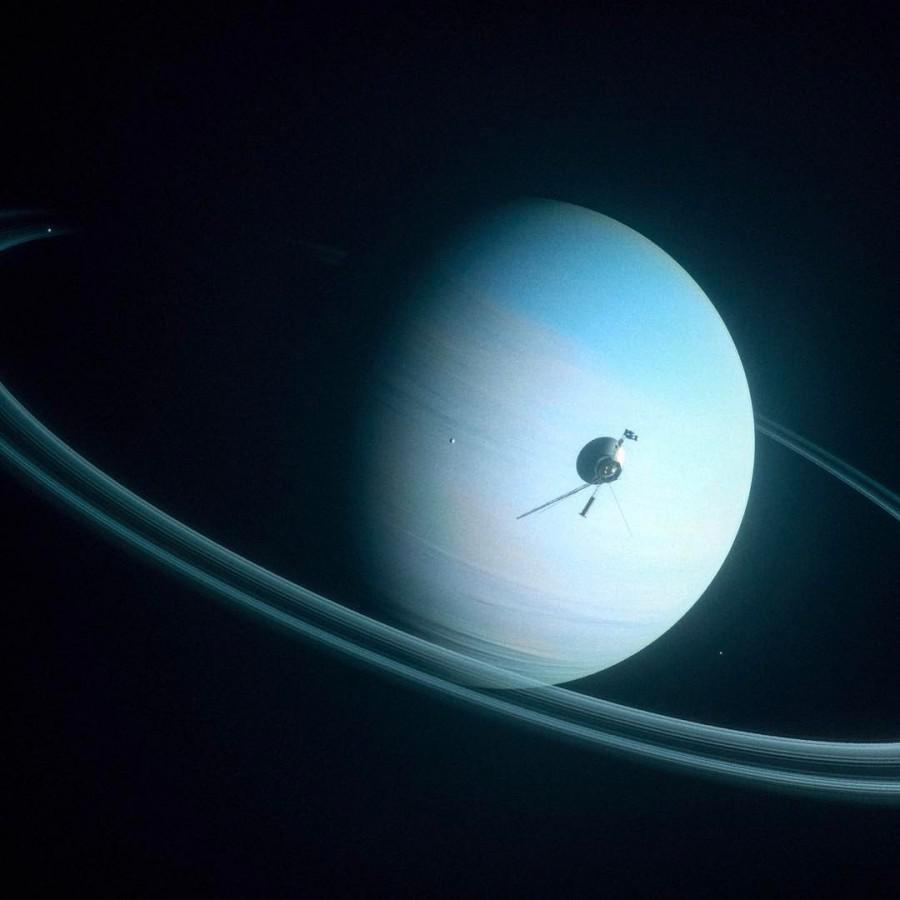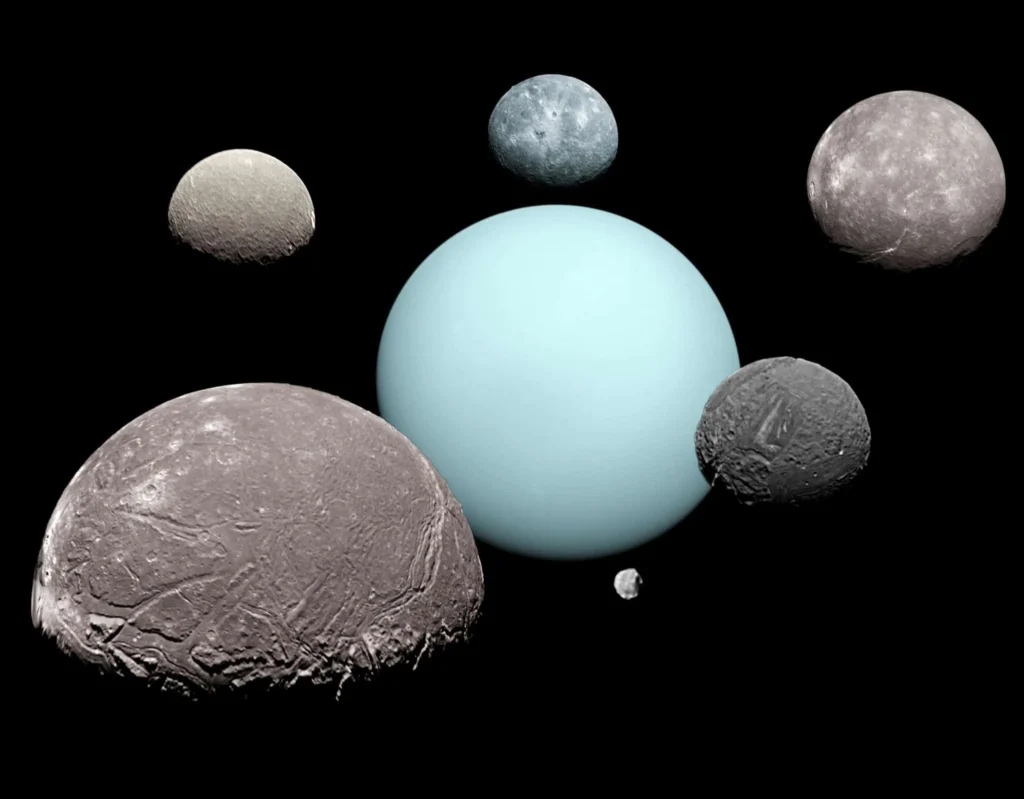The two moons of the planet Uranus may have active subsurface oceans that regularly emit water into the surrounding space. This conclusion was reached by researchers from the Johns Hopkins University Applied Physics Laboratory (APL).
Anomaly in Voyager 2 data
In 1986, Voyager 2 made a flyby of Uranus. To this day, it remains the only earthly messenger who has visited the seventh planet from the Sun. Even after almost forty years, the data it has collected has attracted a lot of attention from the scientific community. Various groups of scientists continue to analyze them using the latest methods in the hope of finding what their predecessors might have missed.

One of these groups of researchers from APL focused on the Voyager 2 measurements of the radiation and magnetic environment in the vicinity of Uranus. They drew attention to the excess of charged particles in the area of the magnetic equator of the planet, “clenched” between the moons Ariel and Miranda.
Researchers were surprised by this anomaly. They studied the possibility that the particle cluster detected by Voyager 2 could have been caused by the spacecraft flying through a random plasma stream from the tail of the magnetosphere of Uranus. However, the model they created showed that in this case a wider spread of particles would be observed.
Hidden oceans of Uranus moons
After that, the researchers have focused on the much more intriguing possibility that the source of the particles are the moons of Uranus, or more precisely, the emissions they produce. The fact is that spacecraft have already found similar anomalies in other gas giants. In the case of Jupiter, its source is Europa, and in the case of Saturn, Enceladus. Both of these moons have a subsurface ocean and geysers that actively emit water into the surrounding space.

Scientists from APL believe that in the case of Uranus, the source of the particles is Ariel and/or Miranda. As for the mechanism of their formation, there are two main possibilities. The first is an ejection in the form of a vapor plume, as on the same Enceladus. The second is “sputtering”. This is the name of the process during which high-energy particles collide with the surface of celestial bodies, causing the release of other particles into space.
In any case, this discovery increases interest in Uranus, and the idea of sending a new research mission there. NASA is currently working on a project for such an expedition, but even in an ideal scenario, it will not be launched before the early 2030s.
According to https://www.space.com
Follow us on Twitter to get the most interesting space news in time
https://twitter.com/ust_magazine

